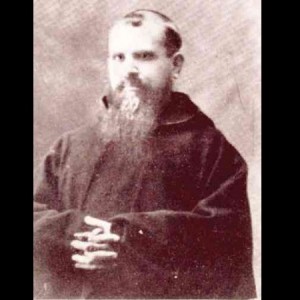
FR. JOSE MARIA DE MANILA The Catholic Bishops’ Conference of the Philippines on Friday announced that the Vatican has cleared the way for the beatification of Manila-born Capuchin Franciscan Fr. Jose Maria de Manila (Eugenio Sanz-Orozco Mortera) in Tarragona, Spain, on Oct. 13 in a ceremony to be led by Cardinal Angelo Amato, prefect of the Congregation for the Causes of the Saints. PHOTO TAKEN FROM THE CBCP WEBSITE
MANILA, Philippines—Another Filipino martyr is on the path to sainthood.
The Catholic Bishops’ Conference of the Philippines (CBCP) on Friday announced that the Vatican has cleared the way for the beatification of Manila-born Capuchin Franciscan Fr. Jose Maria de Manila (Eugenio Sanz-Orozco Mortera) in Tarragona, Spain, on Oct. 13 in a ceremony to be led by Cardinal Angelo Amato, prefect of the Congregation for the Causes of the Saints.
Conveying an announcement from its counterpart in Spain, the CBCP on Friday, through its official news service CBCP News, said Pope Francis may address the audience gathered for the ceremony via satellite from Rome.
After his beatification, Mortera, a missionary born in Manila to Spanish parents on Sept. 5, 1880, will be known as the “Blessed Jose Maria de Manila.” He was killed on Aug. 17, 1936, in Madrid, Spain, during the Spanish civil war.
Mortera was the son of Don Eugenio Sanz-Orozco, the last Spanish mayor of Manila, and Doña Feliza Mortera.
While his baptismal certificate was burned during the Liberation of Manila in 1945, his school records from University of Santo Tomas would show that he was “natural de Manila,” said the CBCP, quoting Fr. Eugenio Lopez, provincial minister of the Capuchin Philippine Province.
Religious persecution
“His school records from UST showed he is ‘natural de Manila.’ All his biographies in Spain also showed he was born in Manila,” said Lopez.
Records also showed that Mortera was among the 500 Spanish martyrs who died in the religious persecution of the 1930s awaiting beatification.
According to Lopez, this group included 32 Capuchins, among them 20 priests and 12 lay religious brothers. Mortera will be beatified three months from now along with 33 other martyrs.
Studied at Ateneo, Letran
Growing up in Manila, the 55-year-old martyr spent his early years studying at Ateneo de Manila, San Juan de Letran and later at UST.
Following customs, he had to move to Spain when he was 16 to pursue further studies. Despite his parents’ disapproval, he fulfilled his desire to become a Capuchin priest.
He had his simple profession in Lecaroz (Navarra, Spain) on Oct. 4, 1905, and his solemn profession three years later. He was ordained priest on
Nov. 30, 1910.
‘Filipino at heart’
Throughout his years in Spain, Mortera “remained a Filipino at heart” and desired to return to the Philippines in order to serve the local Church, said Lopez.
“But circumstances prevented him from fulfilling his dream to come back to the land of his birth. Yet, he still offered his life for the gospel he zealously preached in Spain and longed to proclaim in his native land,” added Lopez.
On July 20, 1936, several religious, including Mortera, were compelled to abandon their convents in Madrid due to the acts of violence perpetuated by Anarchist and Marxist troops against the Christian religious and their ministers.
The Filipino priest was executed a month later at the gardens of the Cuartel de la Montaña, a military barrack in Madrid.
Miracle required waived
Lopez noted that in cases of martyrdom, the miracle required for beatification can be waived.
“For beatification of a martyr who died in ‘odium fidei’ (out of hatred of the faith), a miracle is no longer needed,” he said.
But for Mortera to be proclaimed a saint, a miracle attributed to him must be recognized, Lopez said.
“So let us start asking for his intercession,” he added.
Lopez said the Capuchins in the Philippines will soon start introducing and promoting the devotion to Mortera in parishes nationwide.
The Philippines currently has two saints—San Lorenzo Ruiz and San Pedro Calungsod, who was canonized in Rome in October last year.

